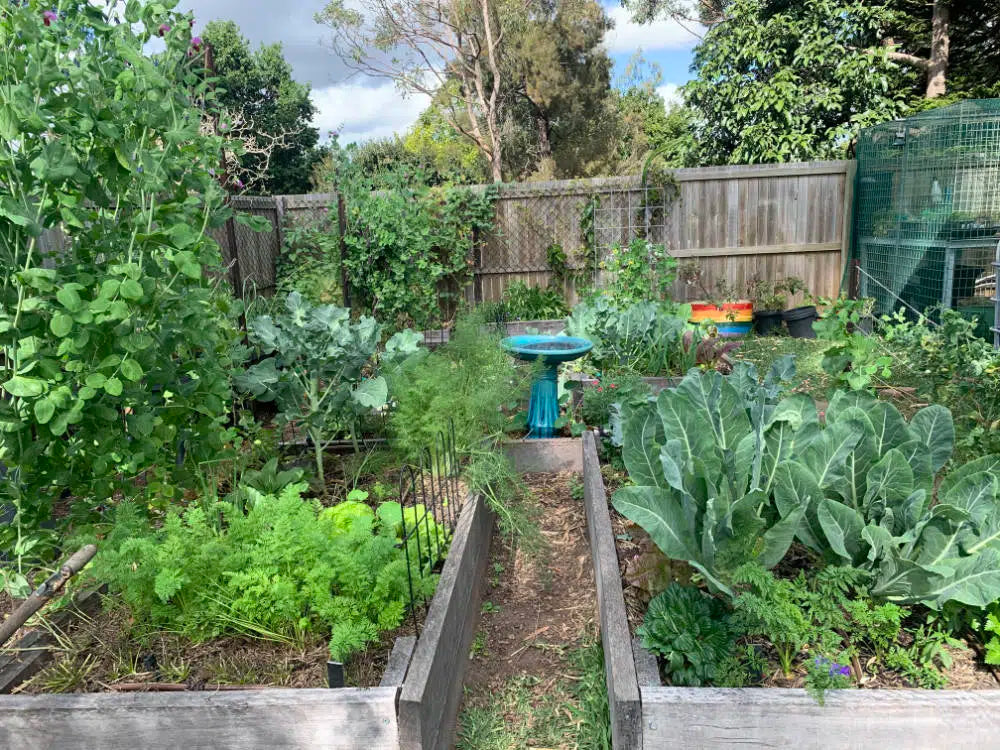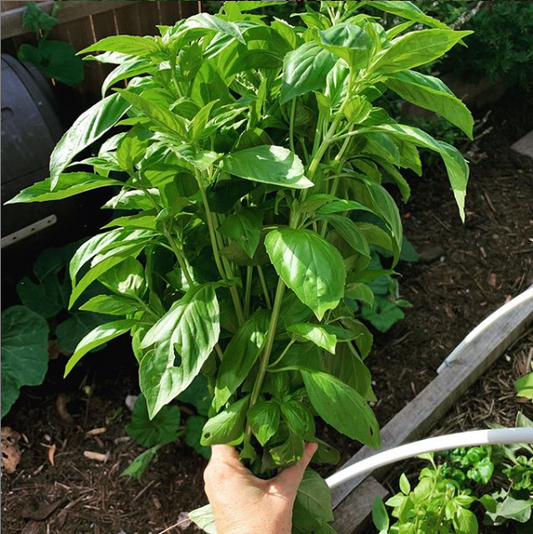We all have one plant that we fail to get going. For some it's coriander, or tomatoes. For me it's potatoes.
Around 6 years ago I attempted to grow potatoes, and failed over and over again. So I gave up.

This year, I decided to give them another crack and I am happy to say I have broken the potato curse. However, I can't say that it was an extremely great harvest, basically breaking even compared to the qty of seeds purchased. But nevertheless I wanted to share the learnings from this year. Hopefully next time I can report back on the abundant success.
You can check out our latest YouTube video that spans over the 4 months of growing potatoes over winter in the subtropics here this year.
Why you should get Seed Potatoes?
This year it took a while for me to obtain seed potatoes. With the start of the pandemic people went a little crazy and it was hard to find them.
Technically you can plant potatoes from the supermarket if they are sprouting (even though it says not to) but I wanted to talk about why you probably shouldn't. Seed potatoes have been cleared of disease. Potatoes are notorious for harbouring disease, early blight, black rot, brown rot, canker, dry rot, scab, gangrene, late blight, mosaic virus, wilt... etc you get the idea. You'd have to be living under a rock not to have heard of the devastation of the great potato famine in Ireland. For a lot of the diseases, once you have the diseases in your soil it takes a long time to get rid of it, and it not only affects potatoes but all in the same family. Tomatoes, eggplant, capsicum. Even if you're ok with taking the risk, from a biosecurity point of view, personally I wouldn't do it.
Varieties of potatoes we grew
I got what I could at the time which was sebago and royal blues. I'd love to try Dutch cream, Nicola and white stars if I can get them next time.
When we planted our potatoes
I didn't manage to get potatoes until April, and then I had to wait for them to chit, which took another few weeks. The sebagos went in early may, and the royal blues went in early june.
Ideally I think we need to plant them in late March while it's still warm enough to get some growth in, and then they can start growing tubers as the days start to get shorter.
Why not grow over summer like everyone else? Towards the end of summer we get too much rain, and with that they are much more susceptible to viral and bacterial diseases - just like overwatering.
How we grew them
This year I experimented with three different spots to gauge the best vessel/location to grow them in. A large container, a raised bed, and directly in the ground. We also just started a grow bag one with the late potatoes that only started sprouting towards the end of winter, they are still growing so I'll report back on their success.

All 3 locations where prepped with compost and some slow release organic fertiliser. Regrettably I wish I added a bit of cow manure to the mix, but next year I will.
We dug trenches and buried them down in side the trench, with the eyes facing the sky. We watered them once after planting and let the rain take care of them the rest of the time. As they grew I filled in the trench but I didn't stack soil any higher than that.
How long it took
The sebagoes we planted in the container took around 109 days, I went a bit early as they hadn't fully died back and I think we would have had a better harvest.
The raised bed sebagoes was a little longer - 116 days (because I waited for the majority to die back).
The in ground bed where we had the royal blues, only took 98 days. These were planted a month after the others and I waited until they had fully died back.
The harvests
The container we harvested around 500gms of potatoes from 3 seeds.

The raised bed we harvested around 1.5kgs of potatoes from 9 seeds.

The in ground garden we harvested around 1kg of potatoes from 12 seeds.

This was 2kgs of seeds, so we broke even (with 6 seeds left over that we're growing in grow bags which will hopefully get us over the break even point).
Key learnings from this years potato growing
Containers are the go
Containers were the best yield for the number of seeds we planted (with the raised bed very close). This is great news as I didn't like them hoarding up growing space for things that grow abundantly over the cooler months.
I am looking forward to seeing how the grow bags go as I think this will be a lot easier to harvest rather than digging around in the soil.
Plant earlier
From what I understand potatoes seem to tuber up in the shorter days, so I'd like to get most of their growing done before the winter solstice. This means getting them in the ground around late March depending on how rainy it is (and also if I can get my hands on seed potatoes that are sprouting).
Let them be
It's clear to me that my issues with growing potatoes in the past was the amount of love I liked to give them in the form of water. I didn't water them once, aside from the rain we got (a total of 28 mm).
Good soil prep
Because I wasn't extremely confident that anything would grow, I neglected my soil prep. Normally I'd add way more compost and manure to a new bed so next time I will definitely not neglect this area next time.
Summing up
I won't be beat, I'll try some more experiments and find the ideal time and setup for growing potatoes. It might take a while but we will keep going.







